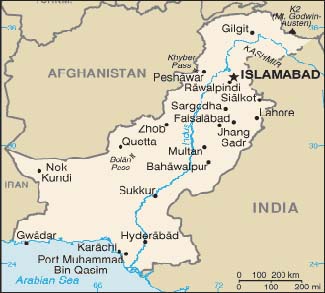Summary
Indian air-force fighter jets violated Pakistani airspace twice in one day, in an apparent attempt to test Pakistan’s air defences. A few days later, India has deployed Russian-made MiG 29 combat fighter jets to the outskirts of their capital, New Delhi. These developments come on the heels of reports emerging of the ultramodern technological training and support received by the Mumbai terrorists.
Analysis
On Friday, the Indian Air Force (IAF) deployed a contingent of Russian-made MiG 29 combat fighter jets to the Hindon air base on the outskirts of New Delhi. The Hindon air base is being reactivated after being inactive for twelve years. Although IAF spokesmen claim that the deployment is defensive in nature, the fact that it comes on the heels of aggressive moves by the IAF exposes the true intent of the deployment.
Just five days earlier, Indian fighter jets violated Pakistani airspace twice – once over Kashmir and the other over Punjab, both preferred routes for an air attack into Pakistan. The violations were necessary for the IAF to test Pakistani air defences, reaction time, and radar and surface-to-air (SAM) sites. Such testing of enemy defences is usually a precursor to a surgical air attack, not a full-blown invasion.
In fact, Pakistani Air Force (PAF) officials claimed that Pakistan scrambled fighter jets in response and ‘chased’ the Indian jets back to Indian airspace. No doubt, the scrambling fighters have now provided the IAF with precise information on the PAF’s response time, radar sites, and location of their border patrol bases. No doubt, also, that this information is being combed over in detail by IAF personnel as plans for a surgical air strike into Pakistan gains momentum in New Delhi.
Indian Defence officials have conceded that a surgical air strike into Pakistan, aimed at militant training camps, cannot be “entirely discounted”.
The seriousness of the Indian exercise has finally dawned on Pakistani leaders. After first dismissing the reconnaissance exercise as merely a ‘technical incursion’, Pakistani Prime Minister Asif Ali Zardari’s government has reversed course by lodging an official protest yesterday.
The sharp escalation in cross-border tension, comes on the heels of reports emerging out of Mumbai that the terrorists that attacked India’s financial and cultural capital were trained in, and supported by, ultramodern technology, greater than previously thought.
The military precision, professionalism and ruthless sophistication of the terrorist strike against Mumbai last month had already raised doubts of Pakistan’s involvement. Now, reports indicate that the terrorists had prepared for the strike by studying satellite images of the city (including images from Google Earth) on their laptop computers, and carried hand-held GPS devices while communicating with their handlers in Pakistan via internet and satellite phone – technology that is notoriously difficult to trace. Indian newspapers are also reporting that the internet phone numbers were paid by wire transfers, using fake IDs – effectively preempting traceability.
There can be little doubt, now, that the Mumbai terrorists were trained by Pakistan’s Inter-Services Intelligence (ISI) in Special-Ops, and that the attack was a covert-operation, most likely supported from within Pakistan’s own intelligence agencies.
Indian and Pakistani officials have both candidly admitted that the Mumbai attack has derailed the peace process between the nuclear rivals.
The latest developments may do even worse.
Manjit Singh is a contributor to Geopoliticalmonitor.com



